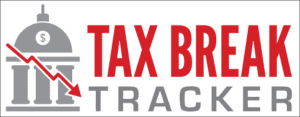How Much Does Corporate Welfare Cost Public Services?
Contact: Christine Wen or Greg LeRoy 202-232-1616, ext. 4 or ext. 1, or [email protected] or [email protected]
Washington, DC — Good Jobs First today unveiled Tax Break Tracker, a new online database that compiles newly-mandated disclosures by state and local governments on how much revenue is lost to economic development tax abatement programs.
“Tax Break Tracker has been completely reprogrammed to eliminate the technical issues users may have encountered with its predecessor – Subsidy Tracker 2,” said Christine Wen, Good Jobs First’s project lead. “Besides improving its functionality, we have added – and will be frequently adding – new content.”
Tax Break Tracker is the only publicly available database that dispenses annual totals on tax revenue lost to economic development subsidy programs. It has been made possible by a government accounting reform for which Good Jobs First led a successful campaign in 2014-2015.
Governmental Accounting Standards Board Statement 77 on Tax Abatement Disclosures (“GASB 77,” an amendment to generally accepted accounting principles, or GAAP) now requires most governments to disclose these lost tax revenues in their Comprehensive Annual financial Reports (CAFRs). Good Jobs First is now gathering that data, CAFR by CAFR, and uploading it into Tax Break Tracker.
For more information on GASB 77, visit Good Jobs First’s GASB 77 Resources Page.
Tax Break Tracker already has many entries from FY 2018, the latest available year. It joins Violation Tracker and Subsidy Tracker – Good Jobs First’s globally-popular databases — as a free, open public information resource.
Whereas Violation Tracker (records of corporate misconduct) and Subsidy Tracker (records of subsidy awards) are most useful for company-specific research, Tax Break Tracker is specific to places : cities, school districts, counties and states.
In addition to reporting the revenue lost by those governments that actively award tax abatements, Tax Break Tracker also captures passive revenue losses , thanks to GASB 77’s coverage. For example, if a school district loses tax revenue passively because of tax breaks awarded by a city or county, under GASB 77 those losses are to be reported by the school district.
Public officials, academics, journalists, public policy organizations, or grassroots groups who are concerned about, for example, about corporate tax breaks undermining a school district’s budget, should always look into the GASB 77 data as a starting point.
Because the data resides in an estimated 50,000 governments’ CAFRS, Tax Break Tracker does not yet cover all GASB 77 records. GASB 77 disclosures are not standardized and cannot be machine-read. As well, as we have blogged, compliance with GASB 77 is still quite uneven.
All that said, Tax Break Tracker is the most comprehensive collection of GASB 77 data in existence and does include major jurisdictions such as states and large cities (see methodological notes in the accompanying user guide).
New entries are continually added and uploaded once every three months: Major updates will be announced on our website and through e-mail blasts, and recorded in the database’s change log.
Good Jobs First is also able to provide GASB 77 information on demand; requests can be made by email to Christine Wen at [email protected].
Editor’s Note: Good Jobs First is a non-profit, non-partisan research and advocacy group founded in 1998. Based in Washington DC, it promotes corporate and government accountability in economic development.
-30-
